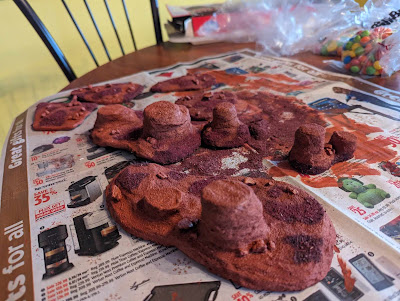Creatures of Taarsh - Part 3

This post has been a long time coming! Who would have guessed that categorizing and summarizing all animal life on earth would be such a big ask? I had originally intended a more complicated process for selecting animals but ultimately decided I was letting perfect get in the way of finished. The Procedure First, pick a region you are trying to create an animal for. Then, pick a base animal from the Native Taarsh Lifeform or the Colonial Lifeform lists . (List to Creatures Part 2). Next, Pick an ecological niche the new animal will fill or roll on the chart below for inspiration. Then, choose an earth animal that fits both the biome and ecological niche. For example, wolves for a forest pack hunter. Finally, mutate the original animal so that it is more like the animal from step 4. I.e., more suited to its ecological niche and biome. You can take this a step further by adding additional mutations as desired OR use your new animal as a ‘base animal’ for the Signs in the Wildernes





